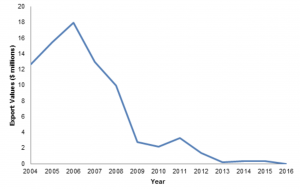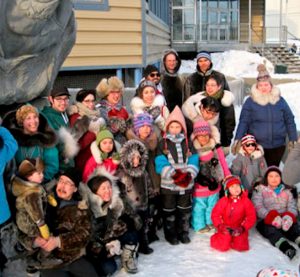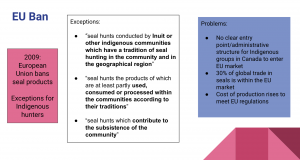“We are trying to feed our communities. When our hunters catch seal they share it – it is the most nutritious food our children and communities can eat.” –Aaju Peter, Inuit from Nunavut
Sealing is an essential part of Indigenous tradition, experience, and many communities’ economies. Seals are an affordable and healthy food source in the remote regions in which Indigenous people live. Yet a growing international backlash to the seal hunt has threatened Indigenous livelihoods and complicated global policy on sealing.
The Canadian seal hunt has been the source of the most public outcry, and has frequently been the target of animal welfare groups’ anti-sealing campaigns. These campaigns use graphic and violent images in order to depict the seal hunt as a violent practice. These campaigns have been effective, decreasing demand for seal products and garnering support for anti-sealing legislation. However, this movement has seriously damaged the economies of Canadian Indigenous group, namely the Inuit, who hunt seals both for personal use and for crafting materials. The market for Inuit seal products has almost completely dried up due to public disapproval for the practice.
In 2009, the European Union announced a ban on seal products in the European market. The EU Ban has been a major obstacle for Indigenous hunters and craftspeople trying to sell seal goods on the international market. Though there is an exemption for Indigenous hunters, the ban has seriously devalued seal products and Canadian Indigenous groups have had trouble accessing European markets.
Canada’s efforts made the European markets somewhat more accessible to Indigenous groups, but the EU ban has still been devastating for the sealing industry.

The value of seal products have tanked in recent years. Export values no longer even reach $1 million per year.
Suicides in Indigenous communities have spiked since the seal industry crashed– Canadian Inuits have the highest suicide rate in the world. 18 out of 20 villages in the Northwest Territories have lost 60% of their community’s income.
As sealing has become unprofitable, many Indigenous hunters have to find new ways to support their families. Subsistence hunting is still important to Indigenous communities in order to provide food and materials in remote regions.
Indigenous communities continue to struggle due to the economic hardship of the seal crash, and the industry does not seem to be making a comeback any time soon. While Indigenous hunters and communities have launched advocacy and legal campaigns to protect their right to hunt and to push back against sealing’s stigma, the international market (and public opinion) has turned its back on seal products.
How do we help heal Indigenous communities and economies?

A Canadian Inuit community poses wearing seal products.
I propose the following policies in order to help Indigenous communities recover from the devastation of the seal trade’s crash:
- Launch a large scale social media campaign
- Indigenous activists can build on previous social media campaigns in order to dispel some of the stigma surround Indigenous seal hunts
- Share stories, images, importance/uses of seals in tradition and every day life
- Won’t save market for seal products, but could spread awareness of issues Indigenous communities face and lessen backlash towards Indigenous sealing
- Improve quality of life in Indigenous communities
- Indigenous families are suffering– suicide, addiction, and hunger plague Indigenous families at some of the highest rates in the world
- Canada should make massive investments in health care, infrastructure, housing, and education in Indigenous communities
- Include Inuit groups in economic development in the Arctic
- The sealing industry might be gone, but there is lots of potential for other economic development in the Arctic
- Indigenous people must be included in future conversations and projects
- New companies/industries can work with Indigenous communities to share knowledge, create jobs, and economically enfranchise Indigenous groups– benefit-sharing systems are one option
The Canadian sealing industry is just one of countless examples where Indigenous voices must be included in further legislation and action in the Arctic. Indigenous people will be the most affected by the Arctic’s future, and they must have a role in deciding what that future looks like.
[ensemblevideo version=”5.6.0″ content_type=”video” id=”ab67bd2b-44f5-4421-a289-07d2bd1036f7″ width=”848″ height=”480″ displaytitle=”true” autoplay=”false” showcaptions=”false” hidecontrols=”true” displaysharing=”false” displaycaptionsearch=”true” displayattachments=”true” audiopreviewimage=”true” isaudio=”false” displaylinks=”true” displaymetadata=”false” displaydateproduced=”true” displayembedcode=”false” displaydownloadicon=”false” displayviewersreport=”false” embedasthumbnail=”false” displayaxdxs=”false” embedtype=”responsive” forceembedtype=”false” name=”Penny Mack, Canadian Sealing”]



